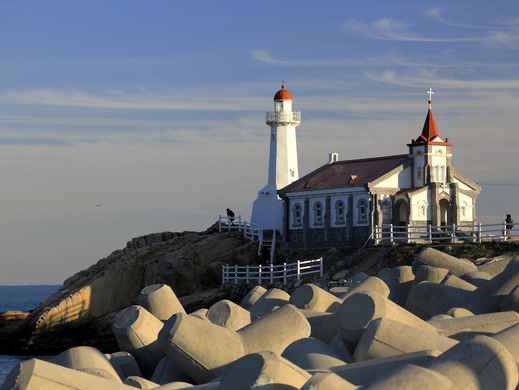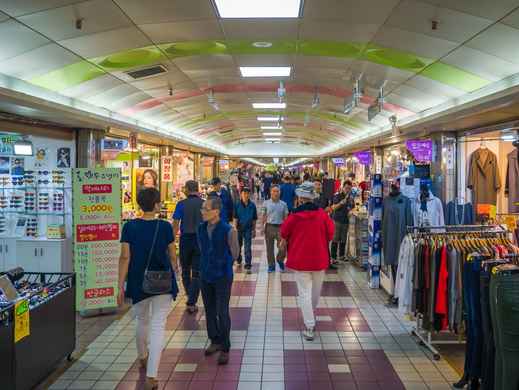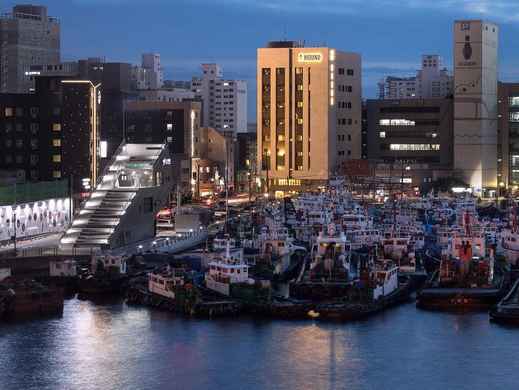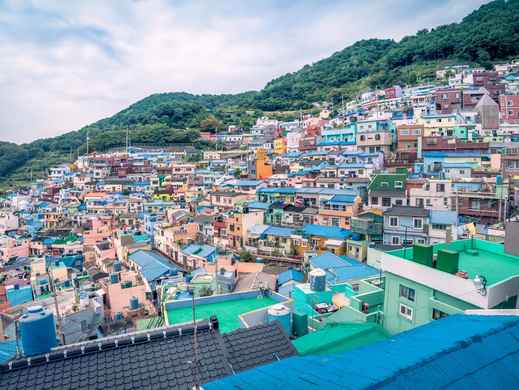Suyeong
Asia
/
South Korea
/
Suyeong
Nestled along the southeastern coast of South Korea, Suyeong is a vibrant district of Busan that perfectly blends coastal charm with urban energy. This waterfront area enjoys a temperate climate with four distinct seasons – mild springs blooming with cherry blossoms, warm humid summers perfect for beach days, colorful autumns, and relatively mild winters compared to Seoul. The sea breeze keeps summer evenings pleasant, though typhoon season (August-September) occasionally brings heavy rainfall.
Suyeong embodies the relaxed coastal lifestyle that defines Busan, offering a refreshing contrast to Seoul's intensity. Locals embrace an outdoor culture centered around the beaches, with early morning swims and evening strolls along the shore being daily rituals for many residents. This district strikes a perfect balance between traditional Korean values and coastal openness, creating a welcoming atmosphere for visitors.
What makes Suyeong truly special is its dual identity as both a beach paradise and a hub of authentic Korean culture. Gwangalli Beach, with its crescent-shaped shoreline and iconic views of the illuminated Gwangan Bridge, provides the perfect backdrop for experiencing modern Korean beach culture. Meanwhile, the district's winding backstreets reveal traditional markets, family-run restaurants, and glimpses into everyday Korean life untouched by the tourism that dominates nearby Haeundae.
Food lovers will find paradise in Suyeong's seafood scene. The district is renowned for its fresh hoe (Korean sashimi) served at restaurants overlooking the water. Don't miss dwaeji gukbap, a rich pork soup with rice that's a Busan specialty, or the street food at Millak Waterside Park's raw fish market, where you can select live seafood and have it prepared on the spot.
Beyond the beaches, Suyeong offers two standout experiences. The Gwangan Bridge Night Cruise provides breathtaking views of Korea's longest bridge over the ocean as it lights up in rainbow colors after sunset. For a more active adventure, hike the coastal portion of the Galmet-gil Trail connecting Gwangalli and Igidae Park, offering stunning cliffside ocean views and hidden beaches that most tourists never discover.

Travel Tips for Suyeong
What you need to know before traveling here
Getting Around Suyeong
A guide to Suyeong's local transportation
Regular taxis are plentiful and affordable, with fares starting at 3,800 won for the first 2km. Look for orange or silver vehicles with illuminated signs. Black premium taxis cost more but offer higher service levels. Most drivers don't speak English, so have your destination written in Korean or use the Kakao T app, which functions similarly to Uber and includes an English interface. Taxis are especially convenient late at night when public transportation becomes less frequent.
Practical Tips for Suyeong
Things to prepare and best way to visit
While both offer beautiful beaches, Haeundae is Busan's most famous and developed beach area, with luxury hotels, major shopping centers, and a more international atmosphere. Suyeong (particularly around Gwangalli Beach) offers a more authentic local experience with fewer international chains and more independent businesses. Gwangalli Beach tends to attract younger Koreans and has a livelier nightlife scene, while Haeundae draws more families and package tourists.
The Korean won (KRW) is the only currency accepted in most establishments. ATMs at major banks like KB, Shinhan, and Woori offer English interfaces and accept foreign cards (look for ""Global ATM"" signs). Currency exchange services are available at the airport, major banks in Suyeong, and tourist areas near Gwangalli Beach. Credit cards are widely accepted, but smaller food stalls and traditional markets may be cash-only.
Suyeong is a paradise for seafood lovers, with numerous hoe (sashimi) restaurants near Millak Waterside Park offering ocean-fresh catches. The area around Gwangalli Beach features trendy cafés and international cuisine alongside traditional Korean options. Don't miss pojangmacha (street food tents) serving odeng (fish cakes) and soju, especially in the evenings. For affordable authentic meals, explore the small restaurants in the residential areas behind the beach, where you'll find specialties like dwaeji gukbap and milmyeon (cold wheat noodles).
Free Wi-Fi is ubiquitous throughout Suyeong in cafés, restaurants, public buildings, and even along the beach areas. For constant connectivity, consider renting a portable Wi-Fi device at the airport (around 5,000 won daily) or purchasing a tourist SIM card from providers like KT, SK, or LG at the airport or at convenience stores. Major convenience stores like CU and GS25 in Suyeong also sell prepaid SIM cards with data plans specifically designed for visitors.
Late May to early July and September to October offer the most pleasant weather for exploring. Summer (July-August) brings crowds to the beaches and higher humidity, though it's ideal if beach activities are your priority. Avoid the major Korean holiday periods like Seollal (Lunar New Year) and Chuseok (Korean Thanksgiving) when transportation becomes crowded and many local businesses close.
See All Practical Tips for Suyeong

Travel Tips for Suyeong












 Facebook
Facebook Instagram
Instagram TikTok
TikTok Youtube
Youtube Telegram
Telegram
